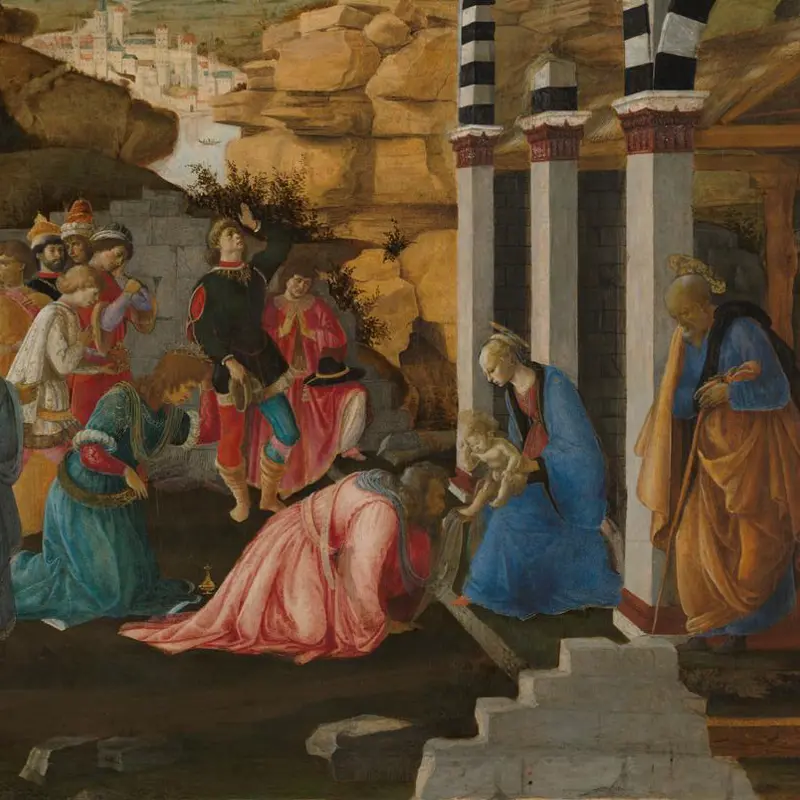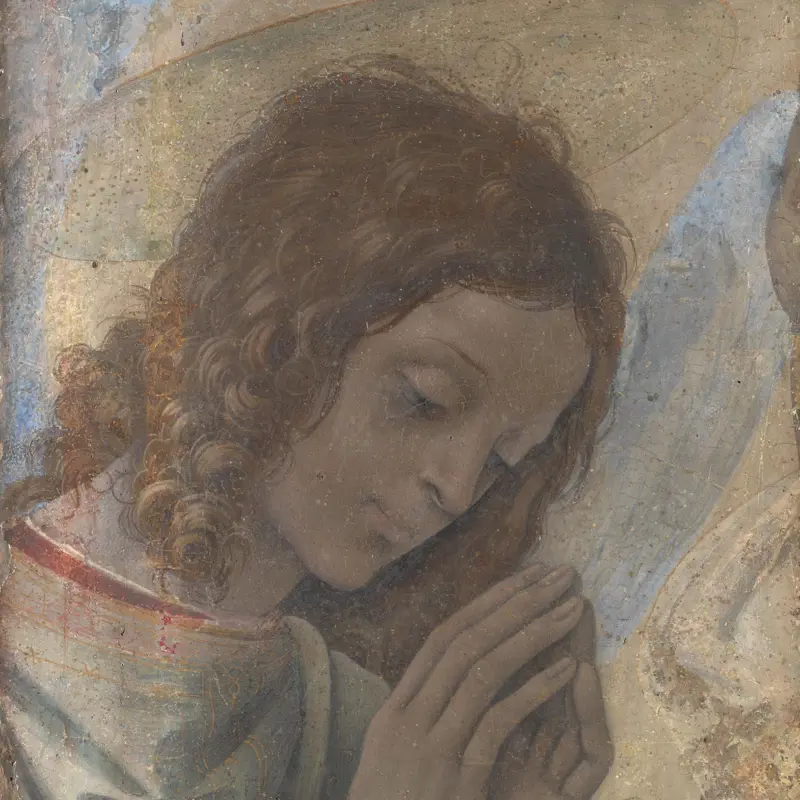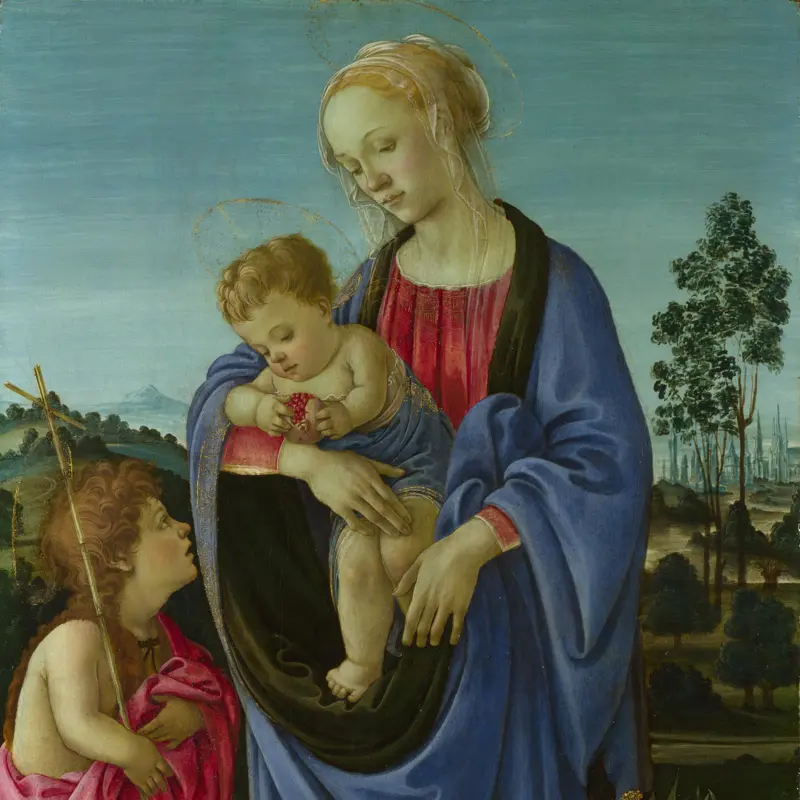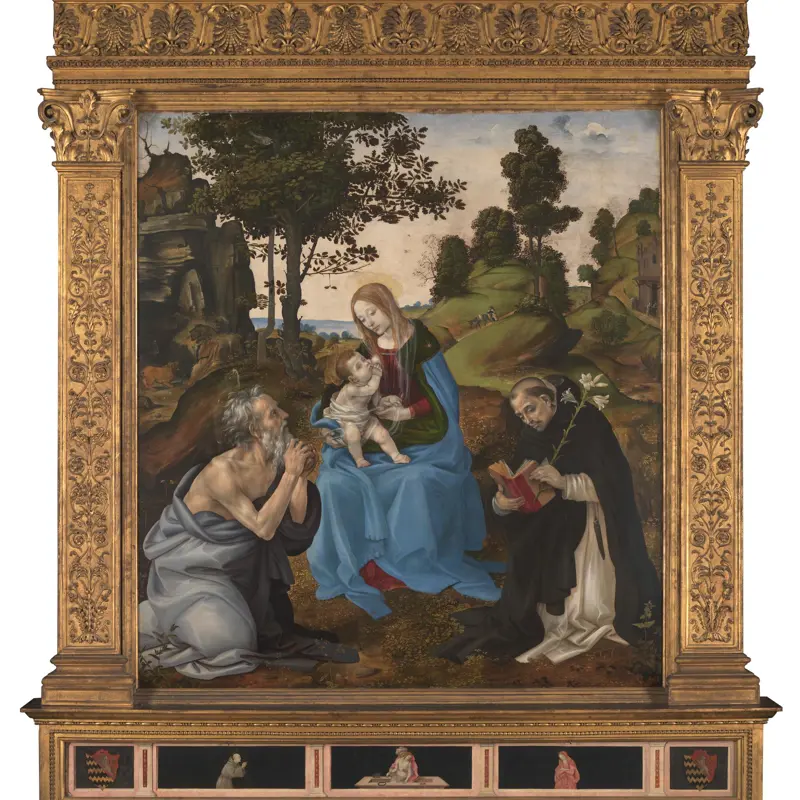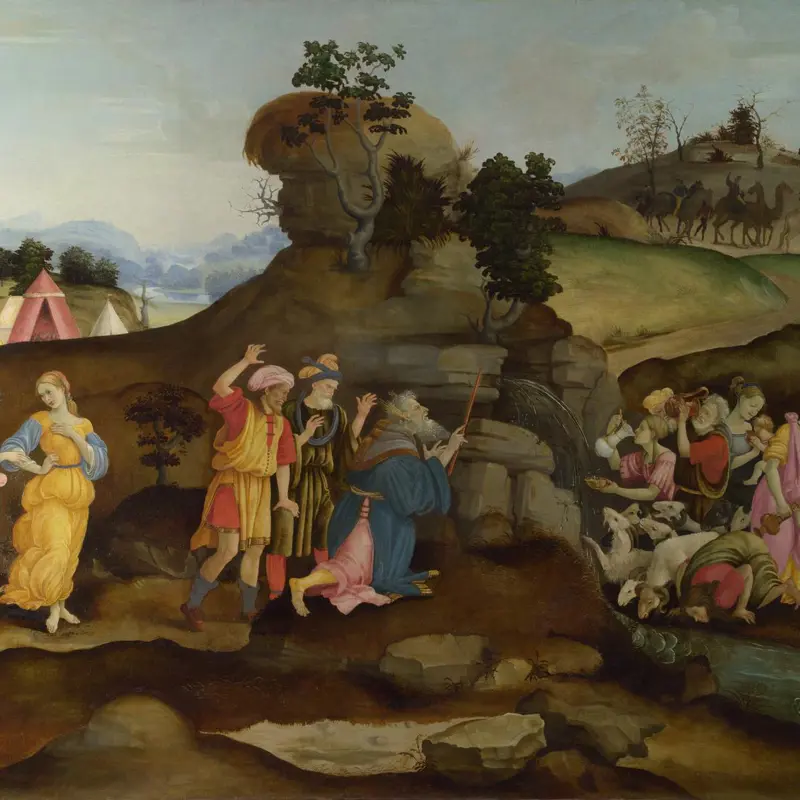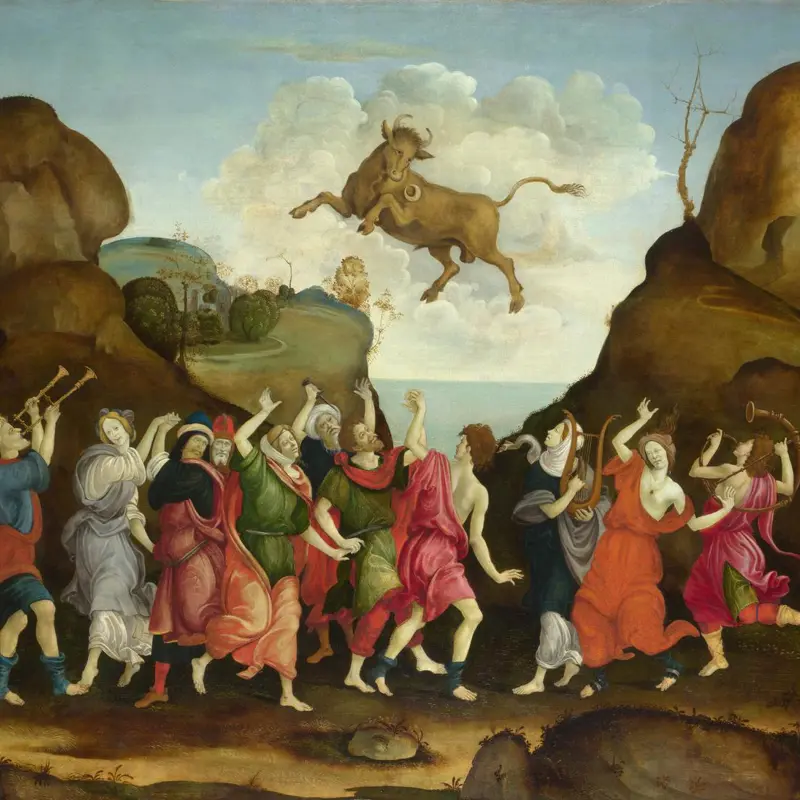Filippino Lippi, 'The Adoration of the Kings', about 1480
About the work
Overview
A ruinous chapel-like building stands in a rocky landscape. The Virgin Mary sits on the remains of a wall and presents the Christ Child to the Three Kings, who, together with their retinue, are gathered around her to present their gifts. The Gospel of Matthew tells the story of the Adoration of the Kings, but does not account for the figures in the background here: Saints Mary Magdalene, Bernard of Clairvaux, Jerome and Augustine, as well as the Archangel Raphael and Tobias. They may have been inserted at the request of the patron.
It is likely that the painting was made for the wealthy Florentine merchant Francesco del Pugliese, whose testament refers to a painting of an Adoration of the Kings by Filippino Lippi. It would have been in a family chapel in the village of Sommaia, in the mountainous area north-west of Florence, the landscape of which is not unlike that of the painting.
Key facts
Details
- Full title
- The Adoration of the Kings
- Artist
- Filippino Lippi
- Artist dates
- about 1457 - 1504
- Date made
- about 1480
- Medium and support
- oil with some egg tempera on wood
- Dimensions
- 57.5 × 85.7 cm
- Acquisition credit
- Bought, 1882
- Inventory number
- NG1124
- Location
- Room 60
- Collection
- Main Collection
- Frame
- 15th-century Italian Frame
Provenance
Additional information
Text extracted from the ‘Provenance’ section of the catalogue entry in Martin Davies, ‘National Gallery Catalogues: The Earlier Italian Schools’, London 1986; for further information, see the full catalogue entry.
Exhibition history
-
2011Filippino Lippi e Sandro Botticelli: nella Firenze del '400Scuderie del Quirinale5 October 2011 - 15 January 2012
-
2015Leonardo 1452-1519Palazzo Reale (Milan)15 April 2015 - 19 July 2015
-
2018Florence and its Painters: From Giotto to Leonardo da VinciAlte Pinakothek (Munich)18 October 2018 - 3 February 2019
Bibliography
-
1951Davies, Martin, National Gallery Catalogues: The Earlier Italian Schools, London 1951
-
1986Davies, Martin, National Gallery Catalogues: The Earlier Italian Schools, revised edn, London 1986
-
2001
C. Baker and T. Henry, The National Gallery: Complete Illustrated Catalogue, London 2001
About this record
If you know more about this work or have spotted an error, please contact us. Please note that exhibition histories are listed from 2009 onwards. Bibliographies may not be complete; more comprehensive information is available in the National Gallery Library.

